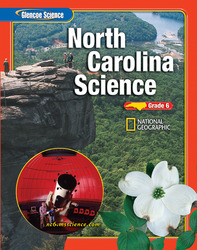North Carolina Science Grade 6Unit 6:
Energy and WavesUnit Project 1Modeling New TechnologyProject Type: Model
Working in small groups, have students research, design, and construct a mini-model of a Mars or Saturn probe. Students should research their chosen topic to include physical characteristics of the working environment, temperature extremes, atmospheric pressure, and transportation limitations. Students should be able to explain how their device works, including the environmental constraints of the materials and design. Introduction:
Planetary exploration has taken a quantum leap in the new millennium with the successful explorations of Mars and Saturn. The Mars rovers have sent incredible images of Mars' surface back to Earth. The rovers have also transmitted data about the red planet that will engage NASA's scientific teams in analysis that will help us more understand more about Mars. With the success of the Cassini-Huygens probes to investigate Saturn and its satellites, scientists will collect information about this outer planet and learn about the nature of this part of the solar system. Students will participate in the phenomena of planetary exploration by taking a closer look at either the Mars or Saturn exploration programs by researching the technology being used to study one of these two planets. They will write about the technology being used to collect data, draw schematics of the probe, then create a model using available and appropriate construction materials. Task:
First, students conduct research to learn about the technology being used to explore Saturn or Mars. They visit Web sites to learn about the Cassini or Huygens probes or the Mars rovers. After their initial investigation, students form small groups and choose one of the types of technology to explore in depth. As students read about their technology, they should take notes about how their planetary probe was designed and constructed, including the specialized scientific instruments included. Their notes should include information about the probe's mission and how it collects and transmits data. Encourage groups to focus on one specific feature of their planetary probe to investigate in detail. Students use their notes to write a description of the planetary probe. Student groups will next create a schematic drawing of their proposed model. These drawings will be accompanied by a list of materials needed to build their models. Students should plan to use safe and appropriate materials to construct their models, such as recycled materials, modeling clay, art supplies, or plastic building block materials for their models. After groups have completed the model-building phase of the project, students should prepare their models for a class event to display their projects. Models can be displayed with labels that describe the model's highlighted technology features and design constraints. Time:
2 class periods for research, 1 class period to write the description and draw the schematics, 2 class periods to collect materials and build the model, 1 class period for class display. Possible Resources:
http://saturn.jpl.nasa.gov/spacecraft/index.cfm
http://saturn.jpl.nasa.gov/kids/activities-model-simple.cfm
http://www.nasa.gov/pdf/59403main_model_challenging.pdf
http://www.nasa.gov/mission_pages/cassini/spacecraft/index.html
http://marsrovers.jpl.nasa.gov/mission/spacecraft_surface_rover.html
http://www.redrovergoestomars.org/rovers/index.html
http://www.redrovergoestomars.org/rovers/tips.html
http://marsrovers.jpl.nasa.gov/mission/spacecraft_surface_instru.html Rubric:
 Click here for a rubric to help you score this project.
(64.0K) Click here for a rubric to help you score this project.
(64.0K)
 | 
















